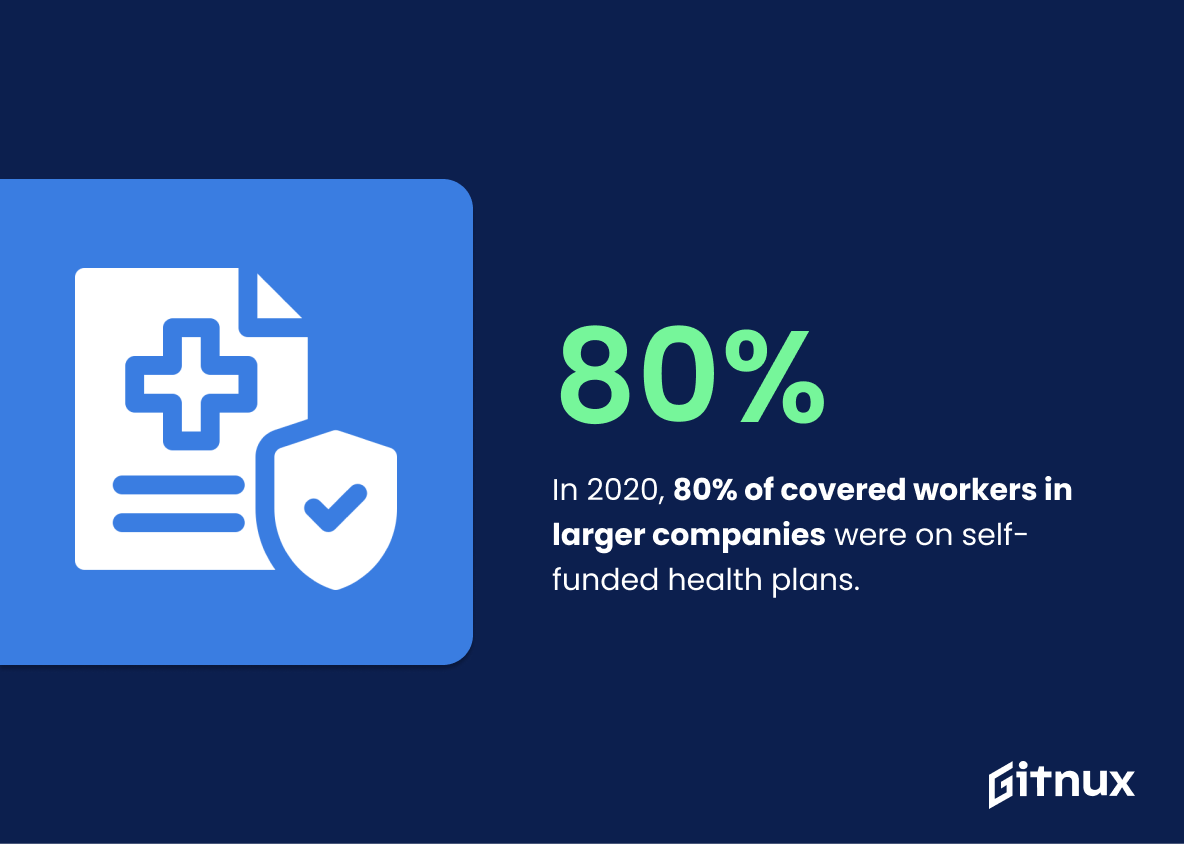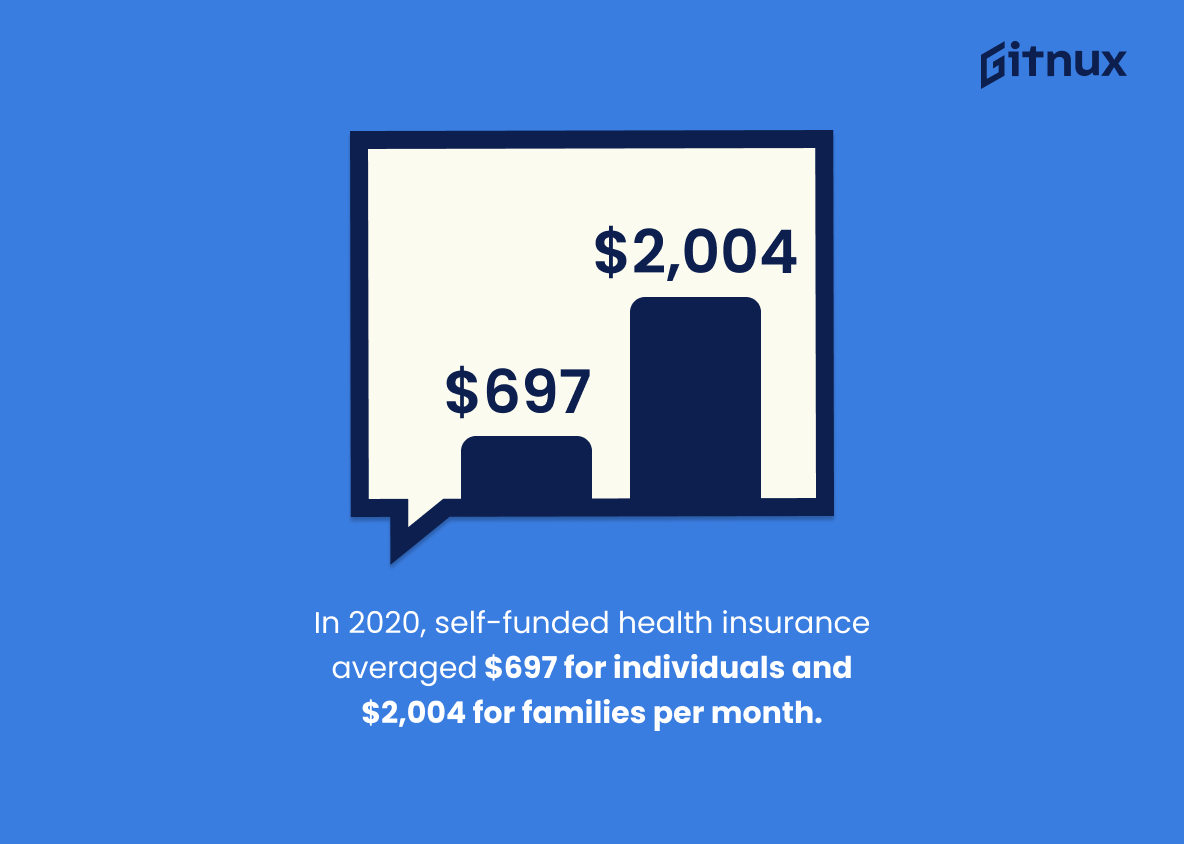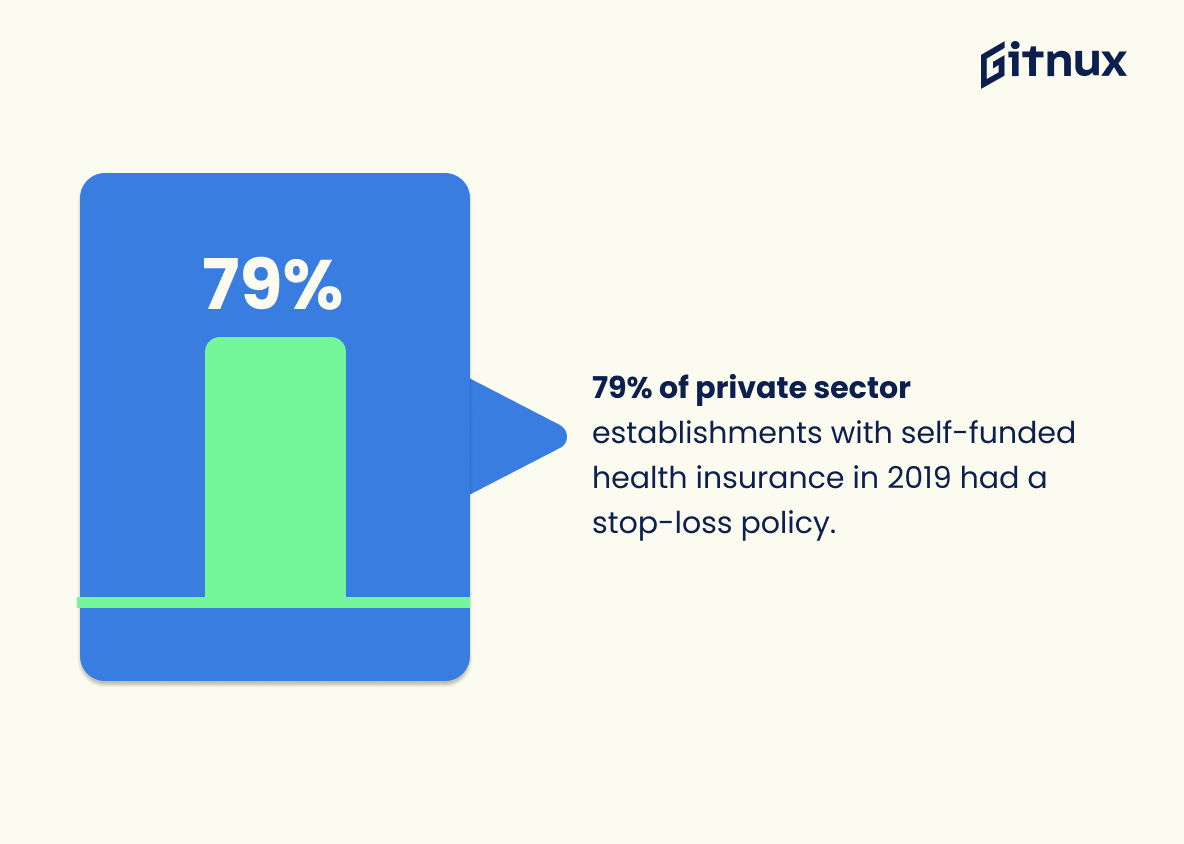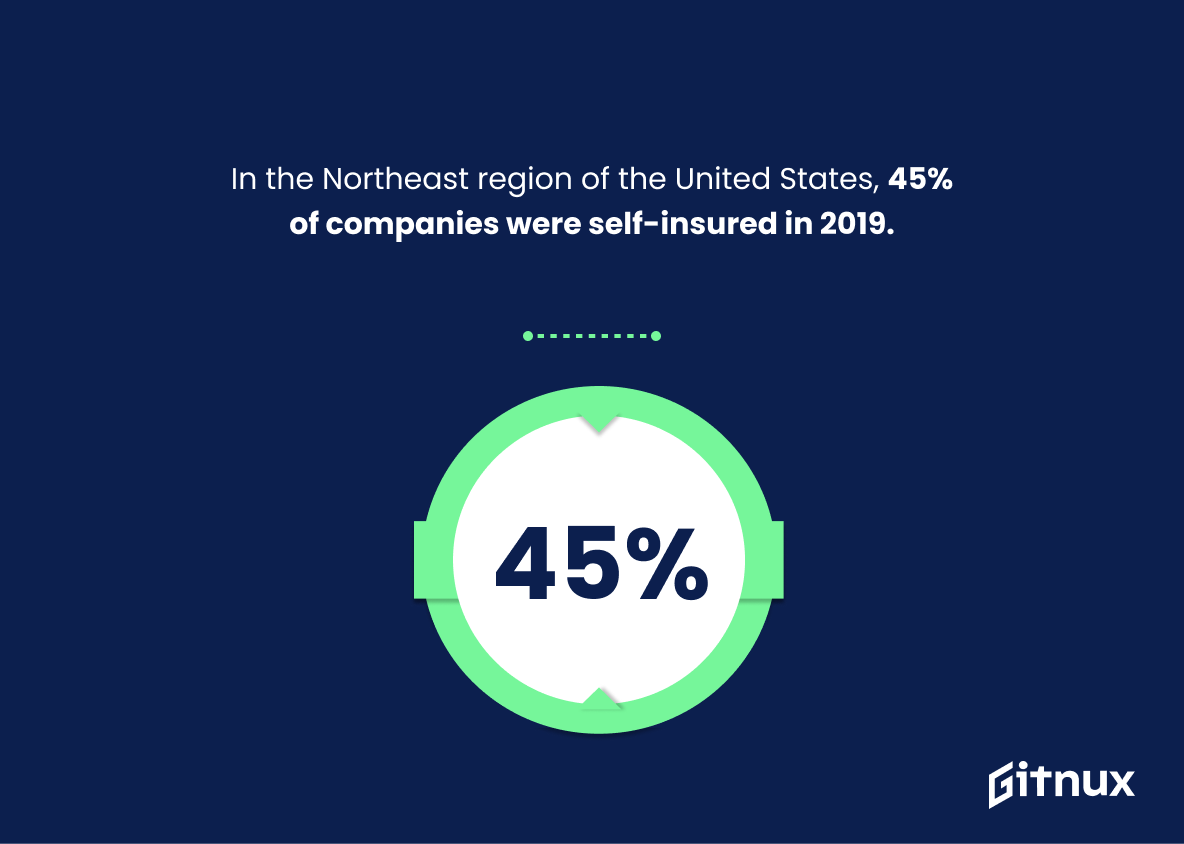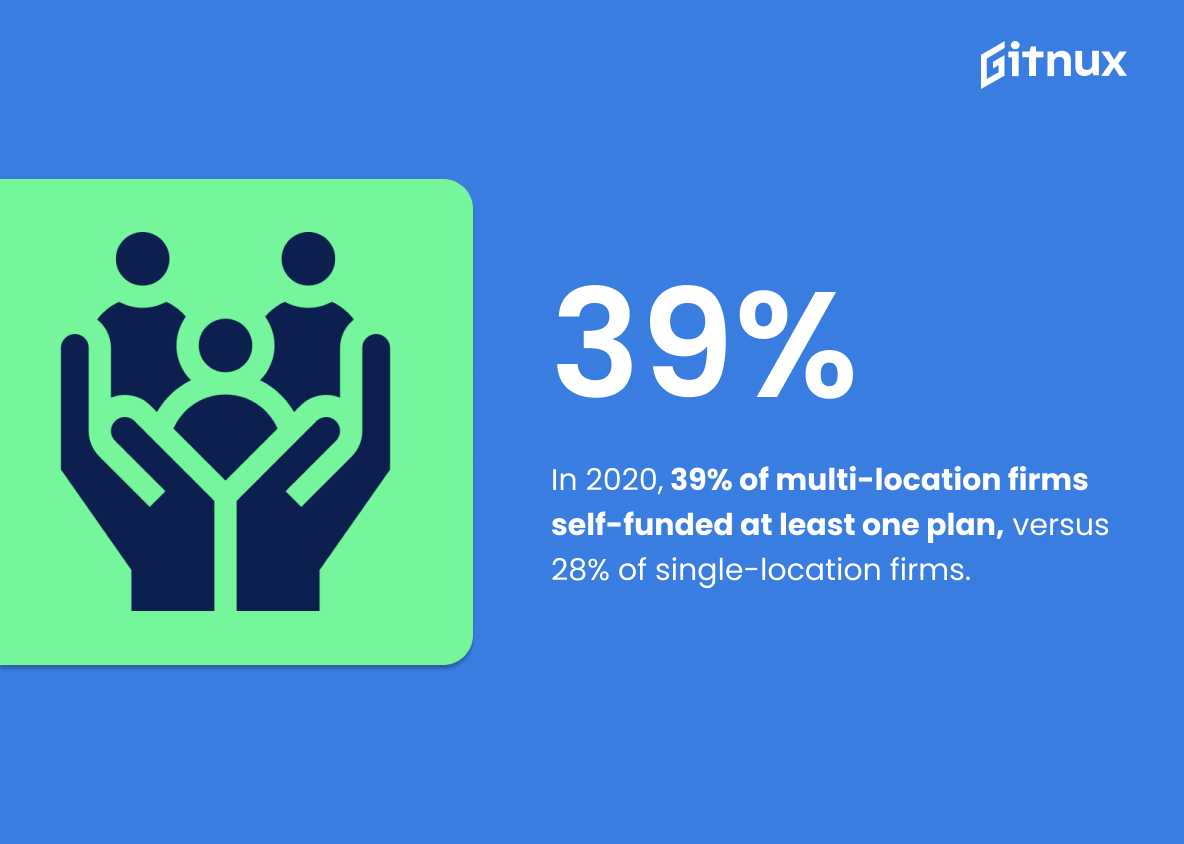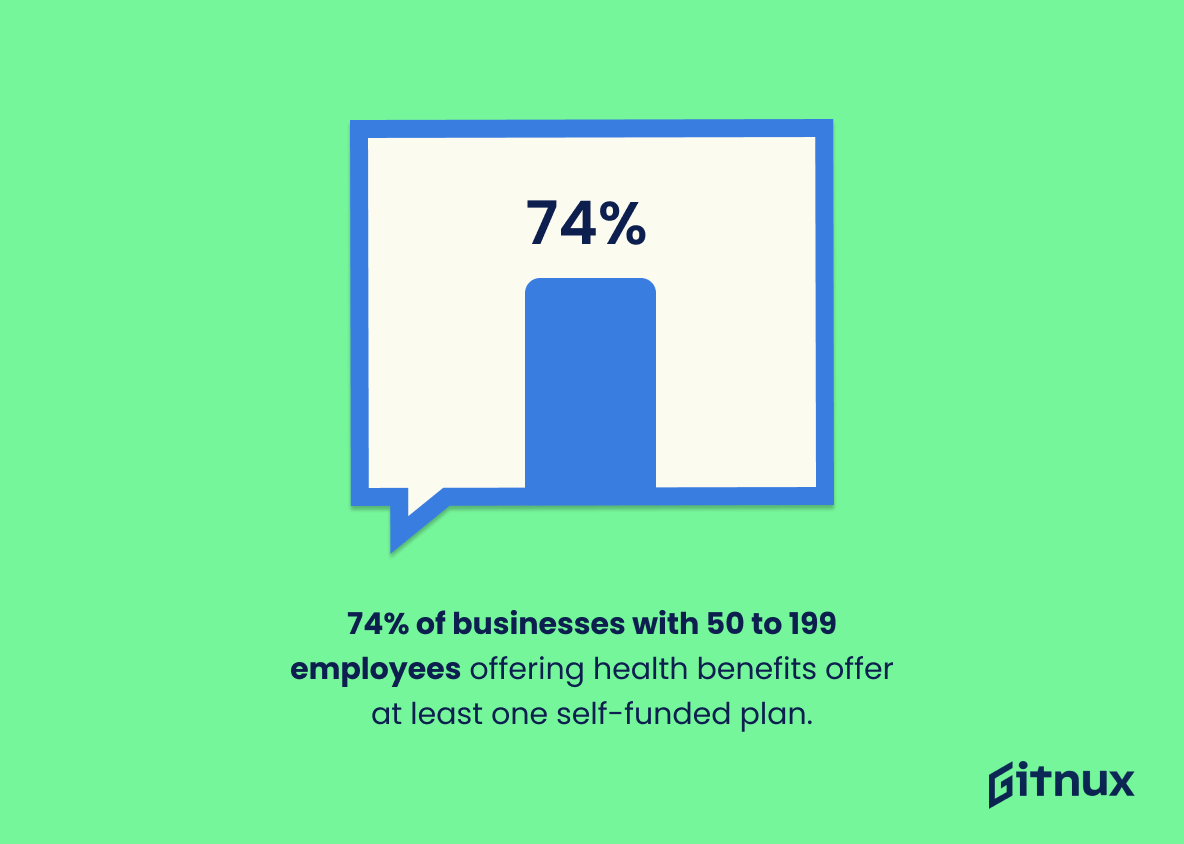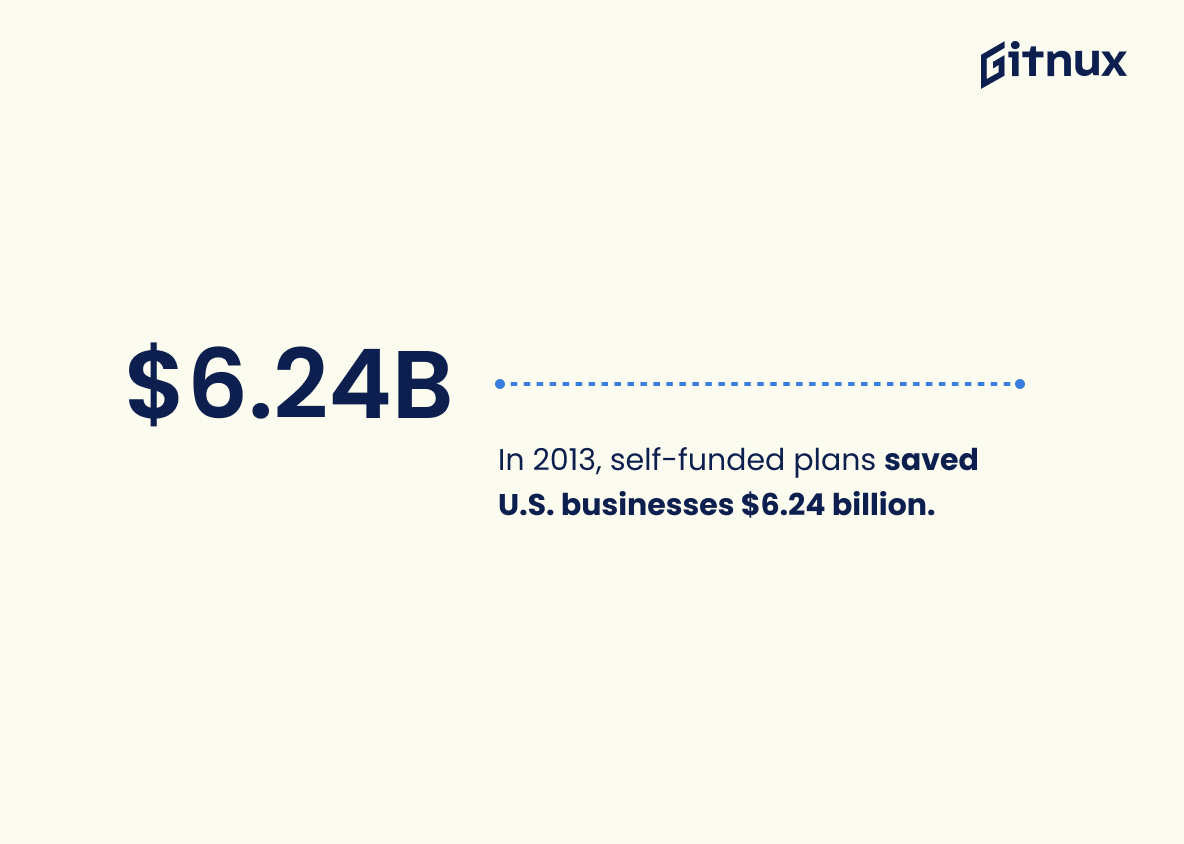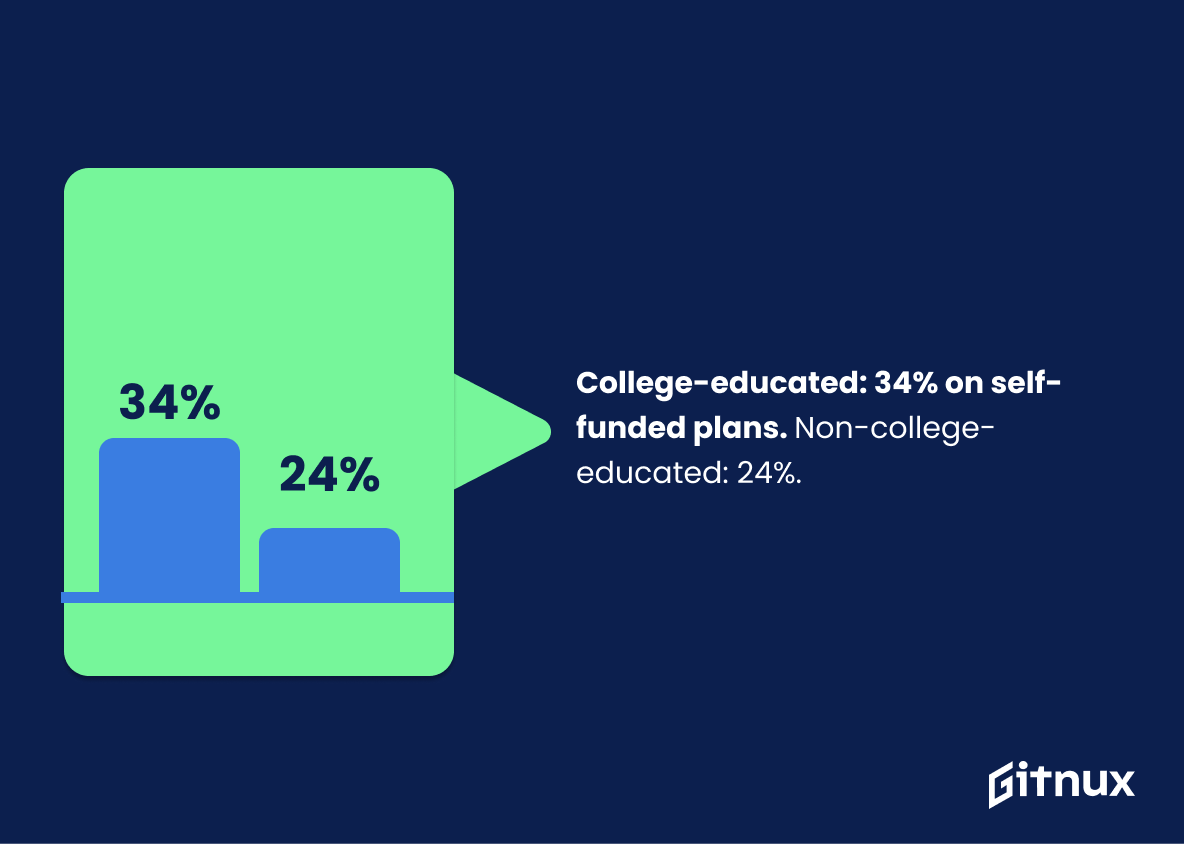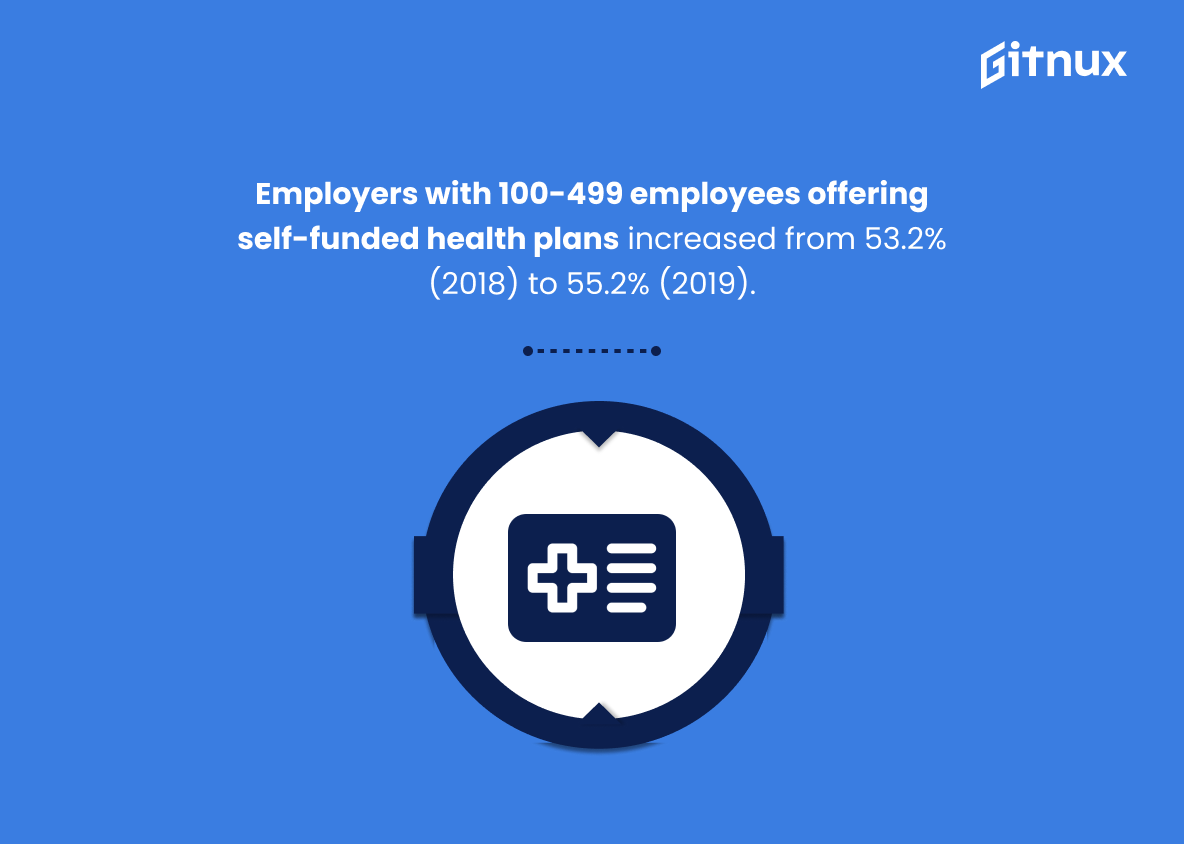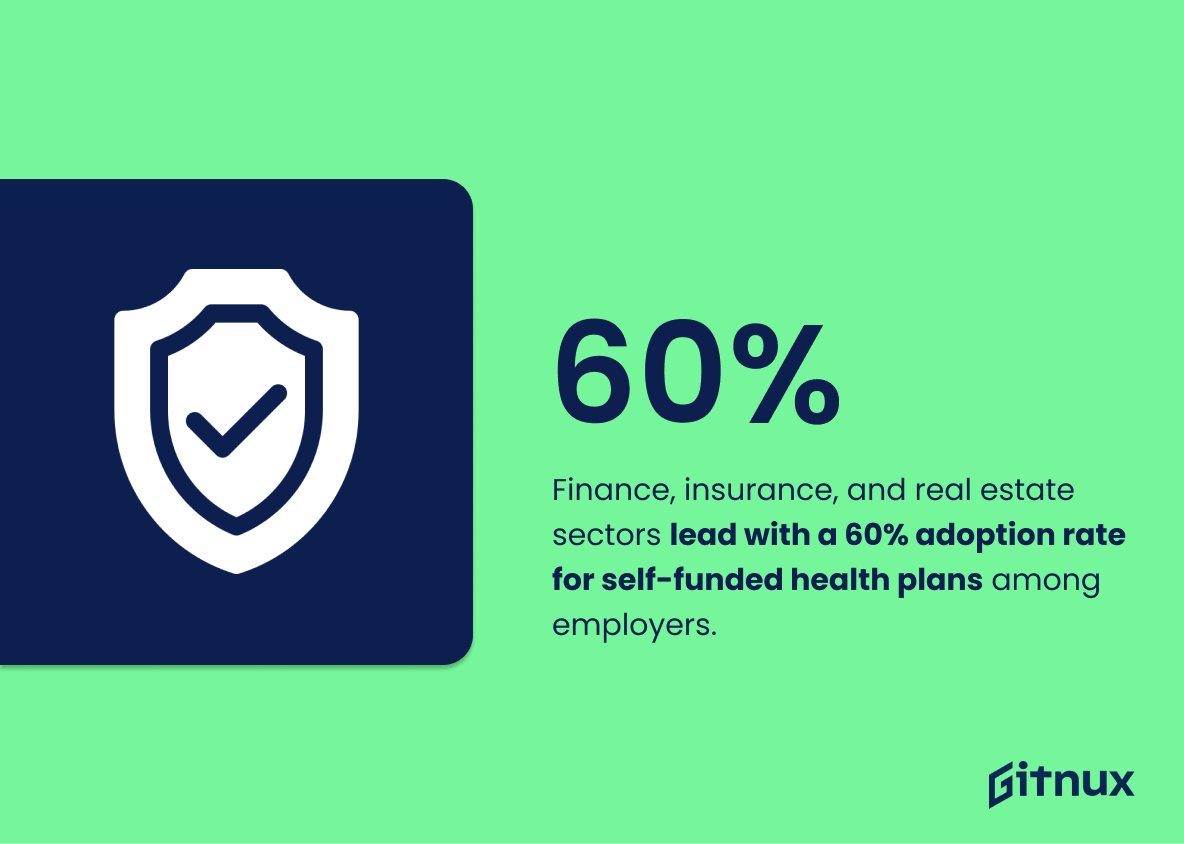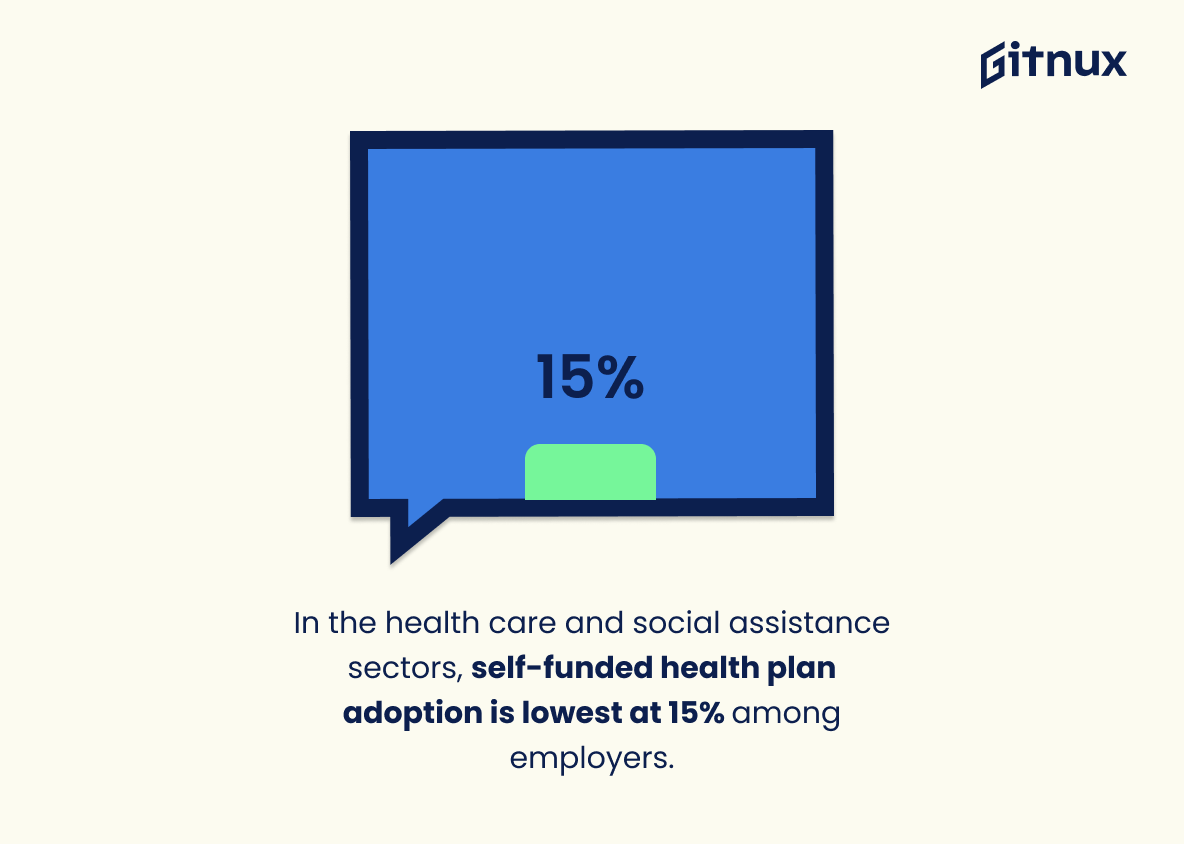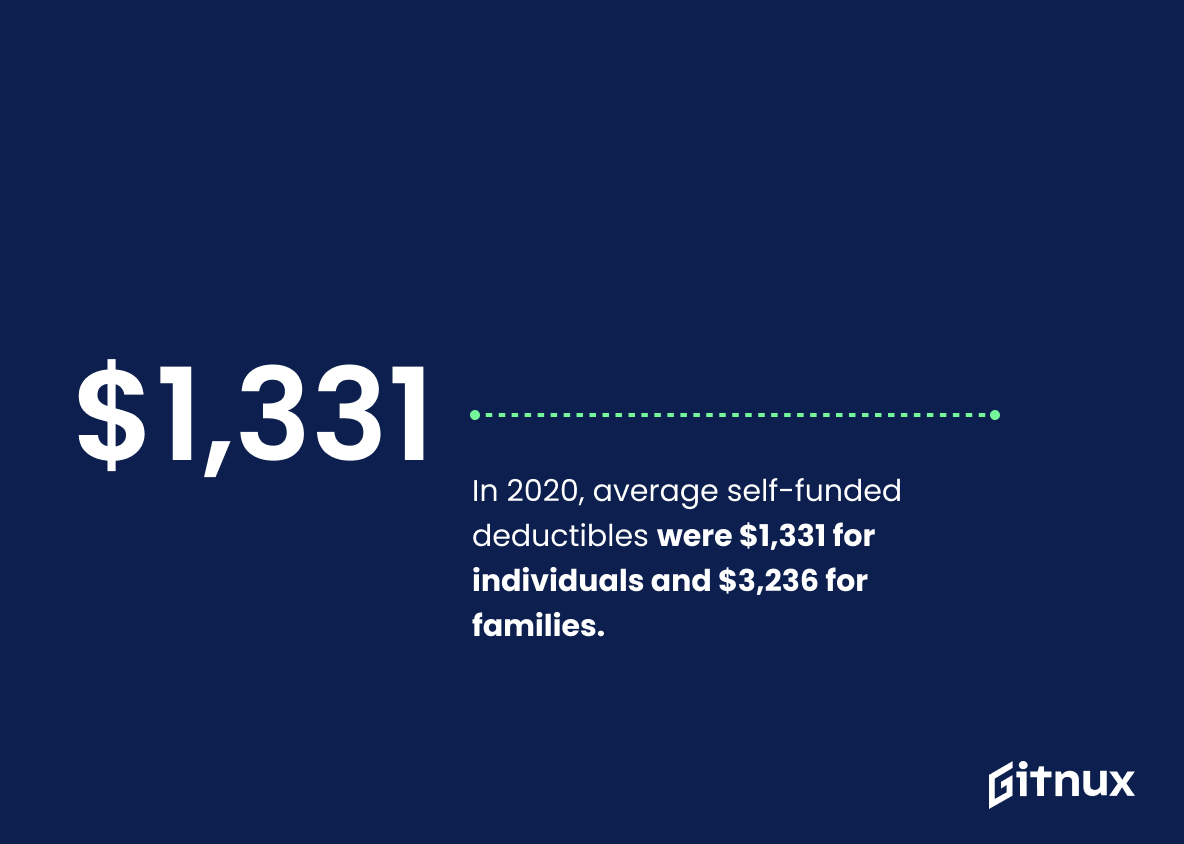Self-funded health insurance plans are becoming increasingly popular among employers in the United States. According to recent statistics, 61% of U.S. workers with employer-sponsored health insurance were enrolled in a self-funded plan in 2019 and 17% of covered workers at small companies (under 200 employees) had a self-funded plan in 2020. In larger companies (over 5000 employees), 80% of covered workers were enrolled in a self funded plan that same year.
The average monthly premium for these plans was $697 for individuals and $2,004 for families while they on average cover 36% of employees compared to 64% coverage by fully insured options. Additionally, 79 percent of private sector establishments with such plans have stop loss policies which protect them from large claims costs due to an unexpected event or illness within their employee population; 45 percent are located within the Northeast region alone. Furthermore, 39 percent firms with multiple locations offer at least one self funded option as opposed to 28 percent single location firms who do so – 74 percent businesses between 50 and 199 offering benefits also provide this type of coverage according to data collected last year..
In 2013 it is estimated that 60 %of those employed by companies making over 1 billion dollars annually had access to such programs saving 6 point 24 billion dollars overall – 34 % college educated versus 24 non college educated being offered this benefit . 55 point 2 % 100 499 size business provided it up from 53 point 2 2018 , finance real estate highest rate adoption 60%, healthcare social assistance lowest 15%. Out pocket max 4 thousand sixty individual 8031 family reference based pricing 17%. Non union 70%. 12 large firm both types available 20 13 .
Self-Funded Health Insurance Statistics Overview
80% of covered workers in larger companies (over 5000 employees) were enrolled in a self-funded health plan in 2020.
This statistic is a powerful indicator of the growing popularity of self-funded health plans among larger companies. It shows that more and more employers are recognizing the potential benefits of self-funding their health insurance, such as cost savings and greater control over plan design. This statistic is an important piece of evidence for anyone looking to learn more about the prevalence of self-funded health plans in the US.
The average monthly premium for self-funded health insurance in 2020 was $697 for individuals and $2,004 for families.
This statistic is a crucial piece of information for anyone considering self-funded health insurance. It provides a clear indication of the cost of coverage for individuals and families, allowing them to make an informed decision about their health insurance needs. Furthermore, it serves as a benchmark for comparison when researching different plans and providers, helping to ensure that the best possible coverage is obtained.
Self-funded health insurance plans on average cover 36% of employees, while fully-insured options cover 64% of employees.
This statistic is a crucial piece of information when it comes to understanding the differences between self-funded and fully-insured health insurance plans. It highlights the fact that self-funded plans are not as comprehensive as fully-insured options, and that employees may be at risk of not having adequate coverage if they opt for a self-funded plan. This is an important factor to consider when making decisions about health insurance, and it is essential to be aware of the differences between the two options.
79% of private sector establishments with self-funded health insurance in 2019 had a stop-loss policy.
This statistic is significant in the context of self-funded health insurance statistics because it demonstrates the prevalence of stop-loss policies among private sector establishments. Stop-loss policies are important for self-funded health insurance plans because they provide a financial safeguard against large, unexpected medical claims. By having a stop-loss policy in place, private sector establishments can ensure that their self-funded health insurance plans remain financially viable.
In the Northeast region of the United States, 45% of companies were self-insured in 2019.
This statistic is a crucial piece of information when it comes to understanding the prevalence of self-funded health insurance in the Northeast region of the United States. It provides a snapshot of the current state of the industry, and can be used to compare the region to other parts of the country. Additionally, it can be used to identify trends in the region and to inform decisions about the future of self-funded health insurance in the area.
In 2020, 39% of firms with multiple locations self-funded at least one plan, compared to 28% of single location firms.
This statistic is a telling indication of the growing trend of firms with multiple locations self-funding at least one plan. It suggests that larger firms are increasingly turning to self-funded health insurance plans as a way to manage their healthcare costs. This is an important development for businesses looking to reduce their healthcare expenses, as self-funded plans can provide significant savings compared to traditional health insurance plans.
74% of businesses with 50 to 199 employees offering health benefits offer at least one self-funded plan.
This statistic is significant in the context of a blog post about Self-Funded Health Insurance Statistics because it demonstrates the prevalence of self-funded plans among businesses with 50 to 199 employees. It shows that the majority of businesses in this size range are taking advantage of the cost savings and flexibility that self-funded plans can provide. This statistic is a useful indicator of the popularity of self-funded plans among businesses of this size and can be used to inform decisions about whether or not to pursue a self-funded plan.
In 2013, self-funded plans saved U.S. businesses $6.24 billion.
This statistic is a testament to the power of self-funded plans in providing businesses with significant savings. It demonstrates that self-funded plans are a viable option for businesses looking to reduce their healthcare costs. This statistic is an important reminder that self-funded plans can be a great way to save money and provide quality healthcare coverage for employees.
34% of college-educated workers are enrolled in self-funded health insurance plans, compared to 24% of non-college-educated workers.
This statistic is a telling indication of the disparity between college-educated and non-college-educated workers when it comes to self-funded health insurance plans. It highlights the fact that college-educated workers are more likely to have access to self-funded health insurance plans than their non-college-educated counterparts, suggesting that there is an unequal distribution of resources when it comes to health insurance. This is an important point to consider when discussing self-funded health insurance statistics.
The percentage of employers with 100 to 499 employees offering self-funded health plans increased from 53.2% in 2018 to 55.2% in 2019.
This statistic is a telling indication of the growing popularity of self-funded health plans among employers with 100 to 499 employees. It shows that more and more employers are recognizing the potential benefits of self-funding their health plans, such as cost savings and greater control over plan design. This is an important trend to note in any discussion of self-funded health insurance statistics.
Employers in finance, insurance, and real estate sectors have the highest rate of self-funded health plan adoption at 60%.
This statistic is a telling indication of the prevalence of self-funded health plans in the finance, insurance, and real estate sectors. It demonstrates that these industries are leading the way in terms of embracing self-funded health plans, which could be a sign of the growing popularity of this type of health insurance. This statistic is an important piece of information for anyone looking to learn more about self-funded health insurance and its prevalence in the business world.
Employers in health care and social assistance sectors have the lowest rate of self-funded health plan adoption at 15%.
This statistic is a telling indication of the state of health care and social assistance sectors. It suggests that employers in these sectors are not taking advantage of the potential savings that self-funded health plans can offer. This could be due to a lack of knowledge or resources, or it could be indicative of a larger issue with the cost of health care in these sectors. Whatever the cause, this statistic is a reminder that more needs to be done to ensure that employers in health care and social assistance sectors have access to the same cost-saving options as other industries.
In 2020, the average self-funded health insurance plan deductible was $1,331 for individuals and $3,236 for families.
This statistic is a crucial piece of information when it comes to self-funded health insurance plans. It provides insight into the amount of money individuals and families must pay out-of-pocket before their insurance plan kicks in. Knowing this information can help people make informed decisions about their health insurance plans and budget accordingly.
The percentage of self-funded employers using reference-based pricing was 17% in 2020.
This statistic is a telling indication of the growing popularity of reference-based pricing among self-funded employers. It demonstrates that more and more employers are turning to this cost-saving option to provide their employees with quality healthcare coverage. As such, it is an important statistic to consider when discussing the current state of self-funded health insurance.
The average out-of-pocket maximum for a self-funded health plan in 2020 was $4,060 for individuals and $8,031 for families.
This statistic is a crucial piece of information for anyone considering self-funded health insurance. Knowing the average out-of-pocket maximums for individuals and families can help them make an informed decision about their health care coverage and budget accordingly. It also provides a benchmark for comparison when researching different plans and providers. By understanding the average out-of-pocket maximums, individuals and families can make sure they are getting the best coverage for their needs.
Approximately 70% of non-union workers in the private sector are covered by self-funded health plans.
This statistic is a powerful indicator of the prevalence of self-funded health plans in the private sector. It demonstrates that the majority of non-union workers are relying on self-funded health plans to provide them with coverage, highlighting the importance of understanding the implications of self-funded health insurance. This statistic is essential to understanding the current state of self-funded health insurance and the potential impact it can have on individuals and businesses.
In 2020, 12% of large firms (over 200 employees) offered both self-funded and fully-insured health insurance plans to their employees.
This statistic is a telling indication of the growing popularity of self-funded health insurance plans among large firms. It shows that more and more employers are recognizing the potential benefits of self-funding their health insurance plans, such as cost savings and greater control over plan design. This is an important trend to note for anyone interested in learning more about self-funded health insurance plans.
In 2013, self-funded health insurance plans covered an estimated 60% of employees of companies with sales above $1 billion.
This statistic is a telling indication of the prevalence of self-funded health insurance plans among large companies. It demonstrates that a significant portion of the corporate world is turning to self-funded health insurance plans to provide coverage for their employees. This statistic is important to consider when discussing the overall landscape of self-funded health insurance plans, as it provides insight into the prevalence of these plans among large companies.
Conclusion
Self-funded health insurance plans are becoming increasingly popular among U.S. employers, with 61% of workers in employer-sponsored health insurance enrolled in a self-funded plan as of 2019 and 17%-80% depending on the size of the company in 2020. The average monthly premium for these plans is $697 for individuals and $2,004 for families, while they cover 36% of employees compared to 64% covered by fully insured options. Additionally, 79% have stop loss policies and 45%, 28%, 55.2%, 60%, 12%, 70 % respectively had them at different locations or sizes according to statistics from 2013 -2020 . Self funded plans also offer an out-of pocket maximums that range from $1,331-$4,060 per individual and up to$8 031 per family along with reference based pricing being used by 17%. It appears clear that self funded health insurance has become more prevalent over time due its cost savings potential which was estimated at 6 billion dollars back in 2013 making it a viable option when considering employee benefits packages today
References
0. – https://www.www.ebri.org
1. – https://www.www.bls.gov
2. – https://www.www.healthsystemtracker.org
3. – https://www.www.newyorkfed.org
4. – https://www.www.kff.org
5. – https://www.benefitslink.com
6. – https://www.mercercapital.force.com
